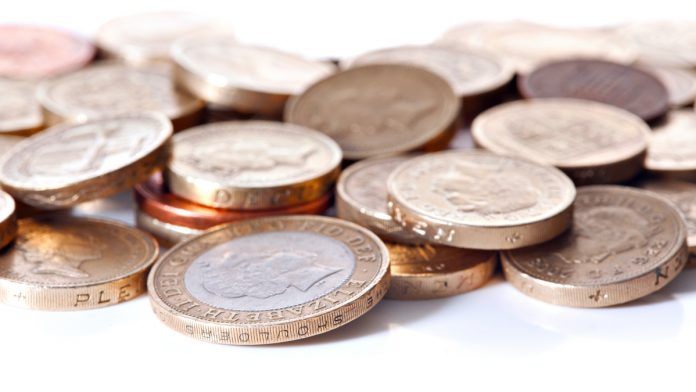The pound dived to a low of US$1.3058 on Tuesday as Brexit nerves were rekindled. This is a significant fall from Friday’s recent high of US$1.3218. The pound is gaining ground in early trade on Wednesday, heading back towards US$1.31.
| What do these figures mean? |
|---|
When measuring the value of a pair of currencies, one set equals 1 unit and the other shows the current equivalent. As the market moves, the amount will vary from minute to minute. For example, it could be written: 1 GBP = 1.28934 USD Here, £1 is equivalent to approximately $1.29. This specifically measures the pound’s worth against the dollar. If the US dollar amount increases in this pairing, it’s positive for the pound. Or, if you were looking at it the other way around: 1 USD = 0.77786 GBP In this example, $1 is equivalent to approximately £0.78. This measures the US dollar’s worth versus the British pound. If the sterling number gets larger, it’s good news for the dollar. |
The UK Parliament voted to tear up UK Prime Minister Theresa May’s Brexit deal and send her back to Brussels for further negotiations. Theresa May won backing to renegotiate the Irish backstop arrangement in her Brexit deal, the most contentious part of the agreement. Teresa May now has two weeks to make progress and placate her supporters before facing Parliament again.
The pound fell sharply lower when Parliament voted against the Cooper amendment. This was an amendment that sought to give Parliament the powers to delay Brexit. Sterling has rallied across recent weeks on the hope that a no deal Brexit would be avoided, by the extension of Article 50. Article 50 takes the UK out of the EU on 29th March, if there is no deal in place then the UK will crash out in a disorderly hard Brexit. This would be the worse case scenario for the pound, which is why it dropped.
| Why is a “soft” Brexit better for sterling than a “hard” Brexit? |
|---|
| A soft Brexit implies anything less than UK’s complete withdrawal from the EU. For example, it could mean the UK retains some form of membership to the European Union single market in exchange for some free movement of people, i.e. immigration. This is considered more positive than a “hard” Brexit, which is a full severance from the EU. The reason “soft” is considered more pound-friendly is because the economic impact would be lower. If there is less negative impact on the economy, foreign investors will continue to invest in the UK. As investment requires local currency, this increased demand for the pound then boosts its value. |
The EU’s response to developments has been the same line as they have been repeating for a while. Donald Tusk President of the European Commission insists that everything has been said and that there is no room for further negotiation. This stance will make any renegotiation very challenging.
Fed Policy Announcement In Focus
The dollar is steady ahead of a busy day with high impacting economic data, the Federal Reserve rate decision and the start of US — Sino trade talks, which could help or hinder trader sentiment.
The main focus will be on the Fed policy announcement later today. Analysts are expecting the Fed to keep interest rates on hold after hiking four times across last year. With no hike forecast attention will quickly turn to Fed Chair Powell’s press conference. Analysts are expecting a more measured speech from Powell in an attempt to not rock the markets as much as he has done in the past.
Fears have been growing over the health of the US economy and the global economy as a whole. A more cautious sounding Fed could pull the dollar lower as investors price out any interest rate rises across the year.
| Why do raised interest rates boost a currency’s value? |
|---|
| Interest rates are key to understanding exchange rate movements. Those who have large sums of money to invest want the highest return on their investments. Higher interest rate environments tend to offer higher yields. So, if the interest rate or at least the interest rate expectation of a country is relatively higher compared to another, then it attracts more foreign capital investment. Large corporations and investors need local currency to invest. More local currency used then boosts the demand of that currency, pushing the value higher. |
This publication is provided for general information purposes only and is not intended to cover every aspect of the topics with which it deals. It is not intended to amount to advice on which you should rely. You must obtain professional or specialist advice before taking, or refraining from, any action on the basis of the content in this publication. The information in this publication does not constitute legal, tax or other professional advice from TransferWise Inc., Currency Live or its affiliates. Prior results do not guarantee a similar outcome. We make no representations, warranties or guarantees, whether express or implied, that the content in the publication is accurate, complete or up to date. Consult our risk warning page for more details.
This article was initially published on TransferWise.com from the same author. The content at Currency Live is the sole opinion of the authors and in no way reflects the views of TransferWise Inc.





